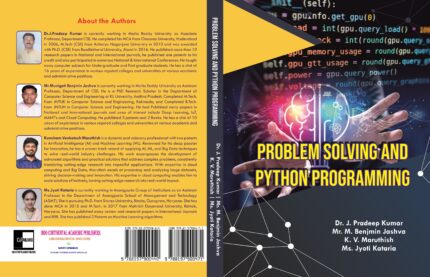In the ever-evolving landscape of education, technology has continually reshaped how we approach teaching and learning. Among the most transformative developments in recent years are Artificial Intelligence (AI) and Machine Learning (ML). These advanced technologies are not only enhancing educational tools and resources but are also fundamentally changing the way we understand and implement pedagogical practices.
The Evolution of Educational Technology
Historically, educational technology has progressed from simple tools like chalkboards and textbooks to more sophisticated systems such as computers, the internet, and interactive whiteboards. Each advancement has aimed to support and enhance the teaching process, making education more accessible, efficient, and engaging.
Today, we stand at the cusp of a new era where AI and ML promise to revolutionize education in ways previously thought impossible. These technologies have the potential to provide personalized learning experiences, automate administrative tasks, and offer insights into student performance that can drive data-informed decisions.
Personalization of Learning
One of the most significant contributions of AI and ML in education is the ability to personalize learning. Traditional education often follows a one-size-fits-all approach, which can leave some students behind while failing to challenge others. AI and ML algorithms can analyze individual learning styles, strengths, and weaknesses to tailor educational content and strategies that meet each student’s unique needs.
This level of personalization is achieved through adaptive learning platforms that adjust the difficulty of tasks in real-time based on student performance. Such systems can provide immediate feedback, recommend resources, and even predict areas where students may need additional support, creating a more engaging and effective learning experience.
Enhancing Educator Efficiency
Beyond student learning, AI and ML can significantly enhance the efficiency and effectiveness of educators. These technologies can automate administrative tasks such as grading, scheduling, and tracking attendance, allowing teachers to focus more on instruction and student interaction.
Moreover, AI-driven analytics can help educators identify patterns and trends in student data, enabling proactive interventions. For instance, predictive analytics can highlight students at risk of falling behind, allowing teachers to address issues before they become critical.
Expanding Educational Access
AI and ML also hold the promise of expanding access to education. Intelligent tutoring systems and virtual classrooms can bring quality education to remote and underserved areas, bridging gaps caused by geographic and economic barriers. Language translation tools powered by AI can break down linguistic obstacles, making educational content accessible to a global audience.
The Future of Education
As we integrate AI and ML into education, we are not merely enhancing existing practices but also redefining the future of learning. These technologies offer an unprecedented opportunity to create a more personalized, efficient, and inclusive educational environment. However, realizing this potential requires thoughtful implementation, ongoing evaluation, and a commitment to addressing ethical challenges.
In this new frontier, educators, students, and technologists must collaborate to harness the power of AI and ML responsibly. By doing so, we can ensure that these innovations contribute to a more equitable and effective educational system, preparing learners for the demands of the 21st century and beyond.







Reviews
There are no reviews yet.